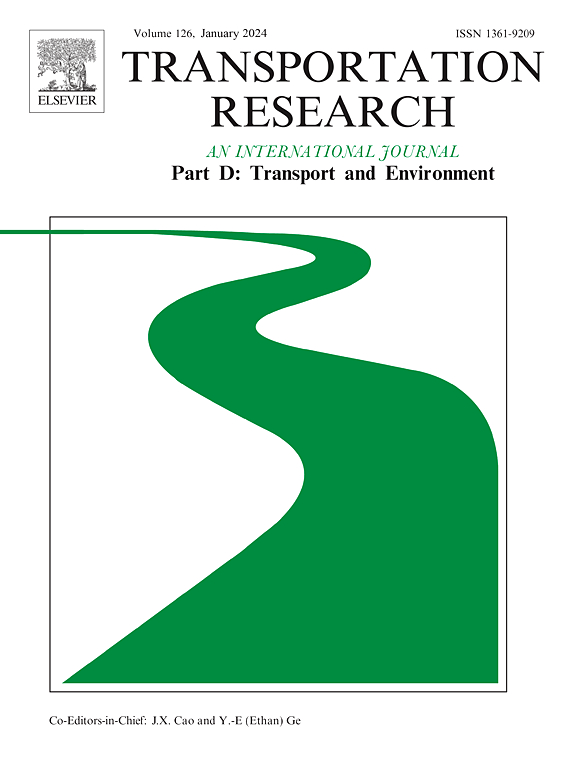三个城市公共交通系统中黑碳水平的比较评估
IF 7.7
1区 工程技术
Q1 ENVIRONMENTAL STUDIES
Transportation Research Part D-transport and Environment
Pub Date : 2025-07-18
DOI:10.1016/j.trd.2025.104904
引用次数: 0
摘要
本研究调查了用户在地铁、公共汽车和快速公交中接触黑碳(BC)的情况。该研究在墨西哥城、普埃布拉(墨西哥)和蒙特利尔(加拿大)进行,以确定与BC水平相关的模式和因素之间的城市特异性差异。收集1500 min以上的数据,采用回归模型分析确定模式和其他因素的影响。在所有测量的交通方式中,地铁系统的BC浓度最高(中位数:10.83 μg/m3;MAD:±6.97 μg/m3)。相比之下,BRT系统的暴露水平最低(3.7228±2.27 μg/m3),公交车的暴露水平相当(4.00±2.22 μg/m3)。值得注意的是,地铁中的高浓度主要出现在地铁在地下隧道中运行的路段。两种地面交通方式的测量值均略高于室外环境水平(2.82±1.66 μg/m3),表明地面通勤期间的额外暴露最小。本文章由计算机程序翻译,如有差异,请以英文原文为准。
Comparative assessment of black carbon levels in public transit systems across three cities
This research investigates users’ exposure to black carbon (BC) in subways, buses, and BRTs. The study was conducted in Mexico City and Puebla (Mexico) and Montreal (Canada) to identify city-specific variations across modes and factors associated with levels of BC. Over 1500 min were collected, and regression model analyses were used to identify the impacts of mode and other factors. Among all measured transit modes, subway systems exhibited the highest BC concentrations (median: 10.83 ; MAD: ±6.97 ). In contrast, BRT systems showed the lowest exposure levels (3.7228 ± 2.27 ), with buses demonstrating comparable concentrations (4.00 ± 2.22 ). Notably, high concentrations in subways are primarily observed in segments where the subway operates in underground tunnels. Both surface transit modes measured slightly above ambient outdoor levels (2.82 ±1.66 ), suggesting minimal additional exposure during above-ground commute.
求助全文
通过发布文献求助,成功后即可免费获取论文全文。
去求助
来源期刊
CiteScore
14.40
自引率
9.20%
发文量
314
审稿时长
39 days
期刊介绍:
Transportation Research Part D: Transport and Environment focuses on original research exploring the environmental impacts of transportation, policy responses to these impacts, and their implications for transportation system design, planning, and management. The journal comprehensively covers the interaction between transportation and the environment, ranging from local effects on specific geographical areas to global implications such as natural resource depletion and atmospheric pollution.
We welcome research papers across all transportation modes, including maritime, air, and land transportation, assessing their environmental impacts broadly. Papers addressing both mobile aspects and transportation infrastructure are considered. The journal prioritizes empirical findings and policy responses of regulatory, planning, technical, or fiscal nature. Articles are policy-driven, accessible, and applicable to readers from diverse disciplines, emphasizing relevance and practicality. We encourage interdisciplinary submissions and welcome contributions from economically developing and advanced countries alike, reflecting our international orientation.

 求助内容:
求助内容: 应助结果提醒方式:
应助结果提醒方式:


